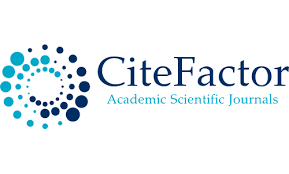The Role of Imam Ghazali's Scientific Heritage in the Development of the Eastern Renaissance
Gulnazaxon Alijonova
Associate Professor of History, Oriental University
Dilshod Makhmudov
2nd Year Student, Faculty of Oriental Languages, Oriental University
##semicolon## Imam Ghazali, scientific heritage, Eastern Renaissance, Islamic philosophy, mysticism
सार
This article analyzes the role and significance of Imam Ghazali’s scientific heritage in the development of the Eastern Renaissance. Imam Ghazali made a great contribution to Islamic scientific thought and culture with his numerous works on philosophy, jurisprudence, mysticism and other disciplines. He is known in the Eastern world as a unique scientist who combined religious and scientific thought. This article analyzes how Imam Ghazali’s works were studied during the Eastern Renaissance and how they are evaluated today.
##submission.citations##
1. Al-Ghazali, Abu Hamid. (2011). Ihya ulumidDin. Tashkent: Islamic Scholars Society.
2. Asqarov, M. (2015). Imam Ghazali: Life and Work. Tashkent: Fan Publishing House.
3. Mullajonov, R. (2017). The Role of Islamic Scholars in the Eastern Renaissance and Its Development. Bukhara: Uzbekistan Islamic Civilization Center.
4. Mirsaidov, S. (2019). The Main Figures of Islamic Philosophy. Tashkent: Sharq Publishing House.
5. Moosa, E. (2005). Ghazali and the Poetics of Imagination. Chapel Hill: University of North Carolina Press.
6. Griffel, F. (2009). Al-Ghazali’s Philosophical Theology. Oxford: Oxford University Press.
7. Nazarov, K. (2018). Sufism and scientific thought in Uzbekistan. Tashkent: Ma’naviyat Publishing House.
8. Alimov, I. (2021). The specific features of Islamic philosophy and jurisprudence. Tashkent: National Encyclopedia of Uzbekistan.

















